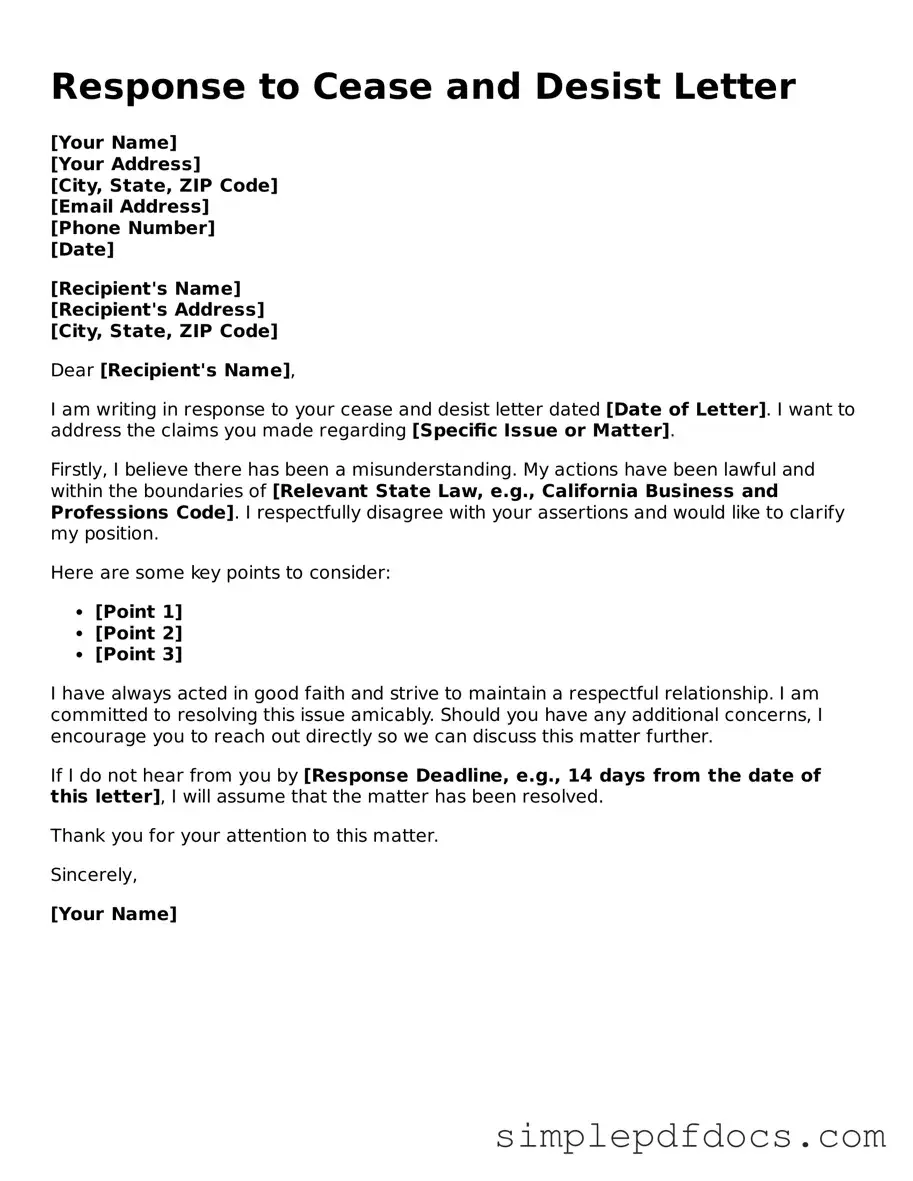Receiving a cease and desist letter can be a startling experience, often signaling a serious dispute or potential legal issue. This formal document typically demands that an individual or entity halt certain actions deemed infringing or unlawful. Responding appropriately is crucial, as it sets the tone for any future negotiations or legal proceedings. A well-crafted response to a cease and desist letter serves multiple purposes: it allows the recipient to assert their position, clarifies misunderstandings, and can even open the door to resolution without escalating the matter to litigation. Key components of the response should include an acknowledgment of the claims made, a clear statement of the recipient's stance—whether it be a denial of the allegations, a request for more information, or an offer to resolve the issue amicably. Additionally, it is essential to maintain a professional tone throughout the correspondence, as this can influence how the situation unfolds. By addressing the letter thoughtfully and strategically, the recipient can protect their interests while navigating the complexities of potential legal challenges.
